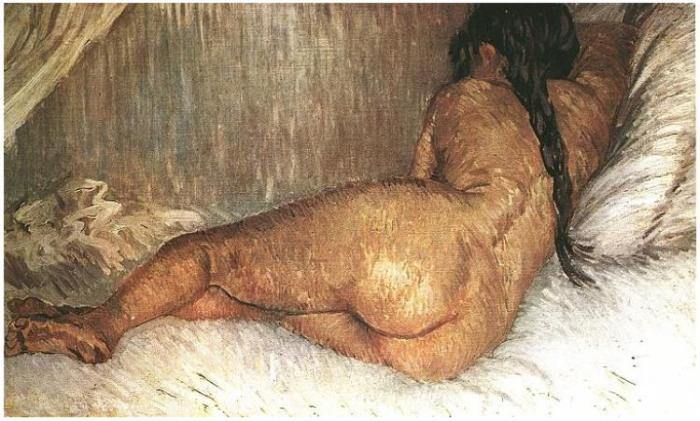A luta das mulheres pela soberania da própria sexualidade é constante.
Quando assumimos propriedade da nossa sexualidade e expressamo-la livremente, somos conotadas como vadias, desvalorizadas, contudo é esperado que o sejamos. É aquela velha coisa “Santa na rua. P*ta na cama”.
Somos socializadas para acreditar que devemos ser virgens e que nos devemos afastar de qualquer contacto sexual. No entanto, simultaneamente, nos é exigida uma performance sexual excepcional e sofremos pressão para dar prazer sempre.
Este dilema para as mulheres negras é ainda mais forte. A mulher negra é ao mesmo tempo a figura menos valorizada no que toca à beleza e desejabilidade, e é também aquela mais objectificada e com a sexualidade mais alienada.

Tal como já tinha referido, aquando da polémica em torna da vitória de Semeneya nos Jogos Olímpicos, o padrão de mulher dominante define a Mulher Ideal como branca, cisgénero e heterossexual, de tamanho pequeno, com aspecto frágil e dócil. Como tal os traços naturais da Mulher Negra apresentam uma inconformidade aos critérios do Imperialismo Branco.
As feições do corpo da mulher negra são vistas como marcas de algo selvagem. Mas os mesmos lábios grandes e glúteos avantajados, numa mulher branca são desejáveis. Basta vermos como Kim Kardashian e a sua irmã Kylie Jenner fazem sucesso com alguns traços tradicionalmente negros.
O corpo da mulher negra está sempre na posição do “outro”, é exótico; diferente. E a mulher negra é proibida; pecaminosa, inadequada para matrimónio ou monogamia. Em países com forte legado esclavagista, como o caso do Brasil e dos EUA, é gritante o caso de homens negros bem sucedidos casados com mulheres brancas, ou no mínimo negras claras. Isso não pode ser coincidência. Não é uma questão de preferência pessoal, mas sim de discriminação sistemática.
No entanto, esses mesmos homens, usam-se do corpo da mulher negra para fazer dinheiro. A mulher negra está nos seus vídeos, fazendo danças eróticas e deitada com eles na cama. Mas raramente como um ser humano completo, dignificado e real.
O corpo da mulher negra é o campo de batalha onde se manifestam as contradições e incoerências do Patriarcado.
Por um lado somos invisíveis, pois nas revistas, na TV e até no mercado erótico, prevalecem as mulheres brancas. Elas são o protótipo de corpo desejável. E por outro lado, as características mais desejáveis são comuns nos corpos de pessoas negras (seios largos; bunda grande; lábios carnudos; etc), mas apenas se estas características forem branqueadas. Até existem produtos dedicados ao clareamento de partes do corpo mais escuras (axilas; cotovelos; mamilos; genitais; etc).
Então as qualidades sexualmente desejáveis são sempre aquelas associadas ao corpo da mulher branca e as características são aquelas da mulher negra.
Numa sociedade que lucra com as inseguranças das mulheres, estar confortável com o seu corpo pode ser revolucionário.
É por isso compreensível que para muitas mulheres negras é na exploração da sua sexualidade que se sentem mais empoderadas, pois é aí que reside o seu valor.
É o caso de Bernice Burgos. Ou, já que falamos nas Kardashians, de Blac Chyna. Ambas são mulheres cuja carreira está intimamene ligada ao imaginário da sociedade no que diz respeito à (in)saciabiliade sexual da mulher negra.
A mulher negra é quente. É sexual. É promíscua. É boa de cama. Estas mulheres correspondem às expectativas do corpo da mulher negra.

Os espaços de prazer e de desejabilidade não nos são acessíveis, e como tal, precisam de ser criados outros alternativos longe das noções de inferioridade ou estereótipos previamente definidos.
Num mundo em que o corpo da mulher negra é forçado a ser “domesticado” para se assemelhar à mulher branca, uma tentativa de fazer dessa prisão um espaço de empoderamento pode ser libertador para algumas mulheres.
